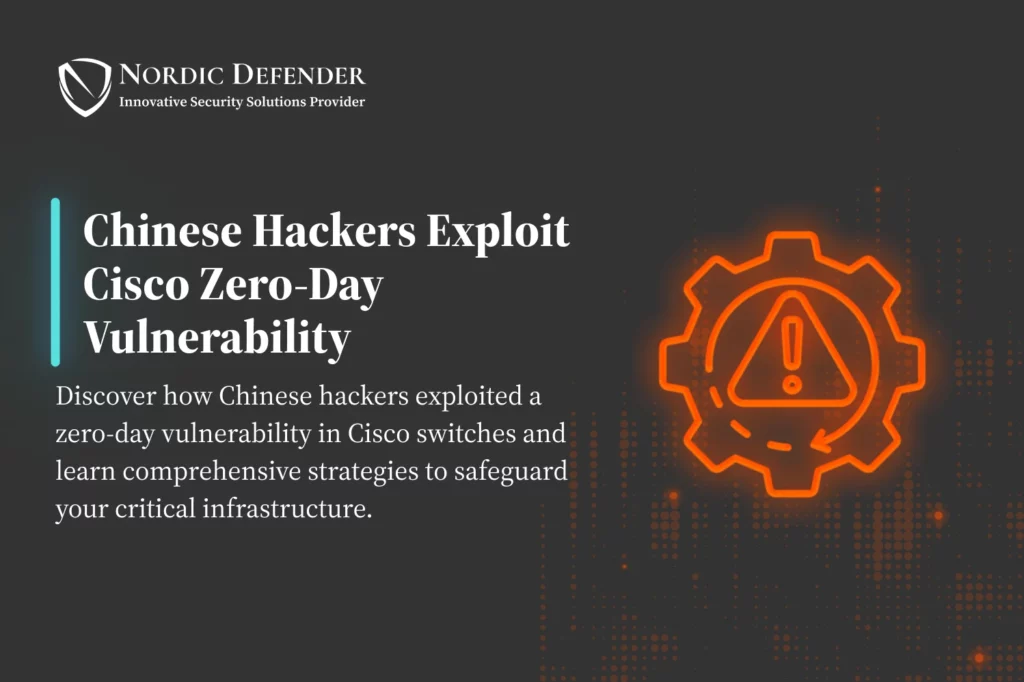In a significant cybersecurity incident, Chinese hackers have exploited a zero-day vulnerability in Cisco switches, gaining unauthorized access to critical systems. This breach underscores the evolving threat landscape and the necessity for robust cybersecurity measures. As a leading cybersecurity provider, we aim to provide a comprehensive analysis of this incident and offer detailed prevention and detection strategies to safeguard your infrastructure.
Understanding the Zero-Day Vulnerability
A zero-day vulnerability refers to a security flaw that is unknown to the vendor and can be exploited by attackers before a patch is available. In this case, the vulnerability in Cisco switches allowed hackers to deliver malware and compromise critical infrastructure. The attackers leveraged this flaw to gain control over systems, potentially leading to data breaches, service disruptions, and other malicious activities.
In-Depth Prevention Strategies
- Proactive Patch Management: Regularly update and patch all network devices, including switches, to mitigate the risk of known vulnerabilities. Implement an automated patch management system to ensure timely updates and reduce the window of exposure.
- Network Segmentation and Micro-Segmentation: Implement network segmentation to isolate critical systems and limit the spread of malware. Micro-segmentation takes this a step further by creating granular security zones within the network, providing enhanced protection against lateral movement by attackers.
- Zero Trust Architecture: Adopt a Zero Trust security model, which assumes that no entity, whether inside or outside the network, can be trusted by default. Implement strict access controls, continuous monitoring, and verification of all users and devices attempting to access network resources.
- Advanced Threat Protection: Deploy advanced threat protection solutions, such as next-generation firewalls (NGFW) and endpoint detection and response (EDR) systems, to detect and block sophisticated attacks. These solutions use machine learning and behavioral analysis to identify and mitigate threats in real-time.
- Employee Awareness and Training: Conduct regular cybersecurity training sessions to educate employees about the latest threats and best practices. Emphasize the importance of recognizing phishing attempts, social engineering tactics, and other common attack vectors.
Comprehensive Detection Solutions
- Intrusion Detection and Prevention Systems (IDPS): Deploy IDPS to monitor network traffic for suspicious activity and automatically block potential threats. These systems provide real-time alerts and can help identify and mitigate attacks before they cause significant damage.
- Security Information and Event Management (SIEM): Utilize SIEM solutions to collect, analyze, and correlate log data from various sources. SIEM systems provide a centralized view of security events, enabling rapid detection and response to incidents.
- Regular Security Audits and Penetration Testing: Conduct regular security audits and penetration testing to identify and address vulnerabilities. These assessments help ensure that your security measures are effective and up-to-date, providing valuable insights into potential weaknesses.
- Threat Intelligence and Collaboration: Leverage threat intelligence services to stay informed about the latest threats and vulnerabilities. Collaborate with industry peers, government agencies, and cybersecurity organizations to share information and enhance your defensive capabilities.
- Behavioral Analytics and Anomaly Detection: Implement behavioral analytics and anomaly detection tools to identify unusual patterns of activity that may indicate a security breach. These tools use machine learning algorithms to establish baselines of normal behavior and detect deviations that could signify an attack.
Conclusion
The exploitation of a zero-day vulnerability in Cisco switches by Chinese hackers serves as a stark reminder of the importance of proactive and comprehensive cybersecurity measures. By implementing robust prevention and detection strategies, organizations can better protect themselves against sophisticated attacks and safeguard their critical infrastructure.
Stay vigilant and prioritize cybersecurity to ensure the resilience and security of your systems.
